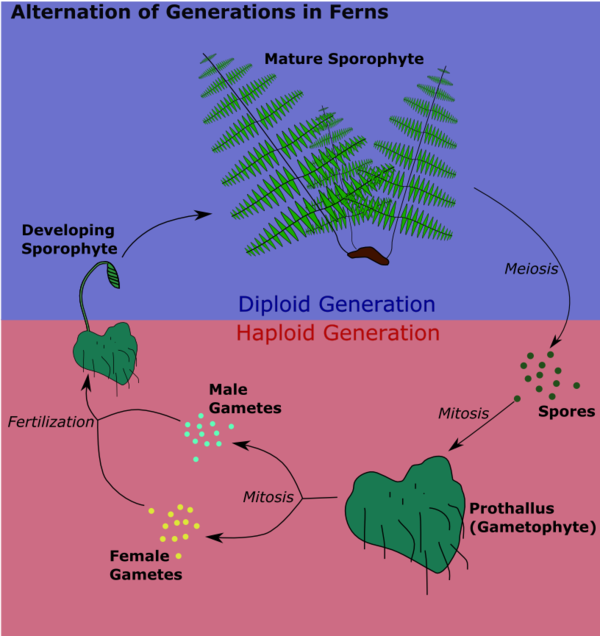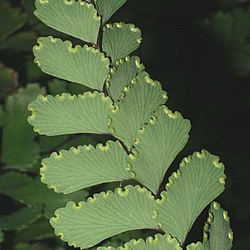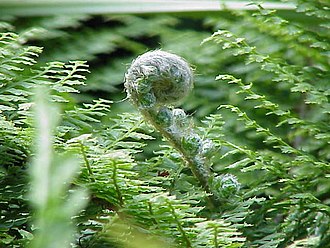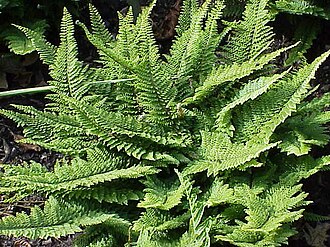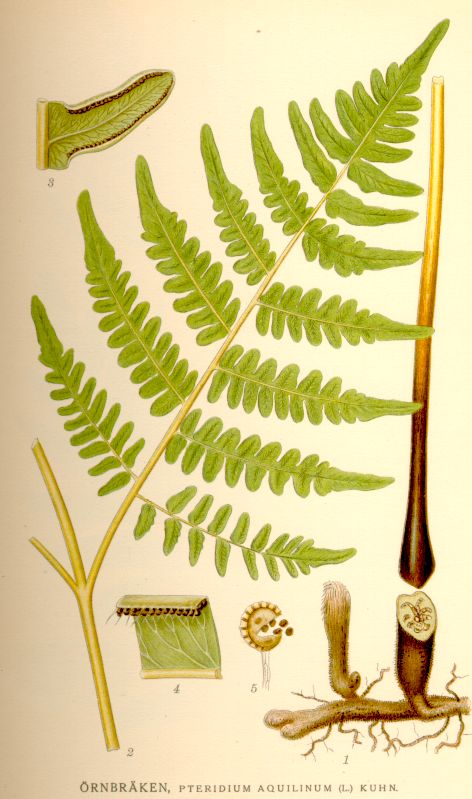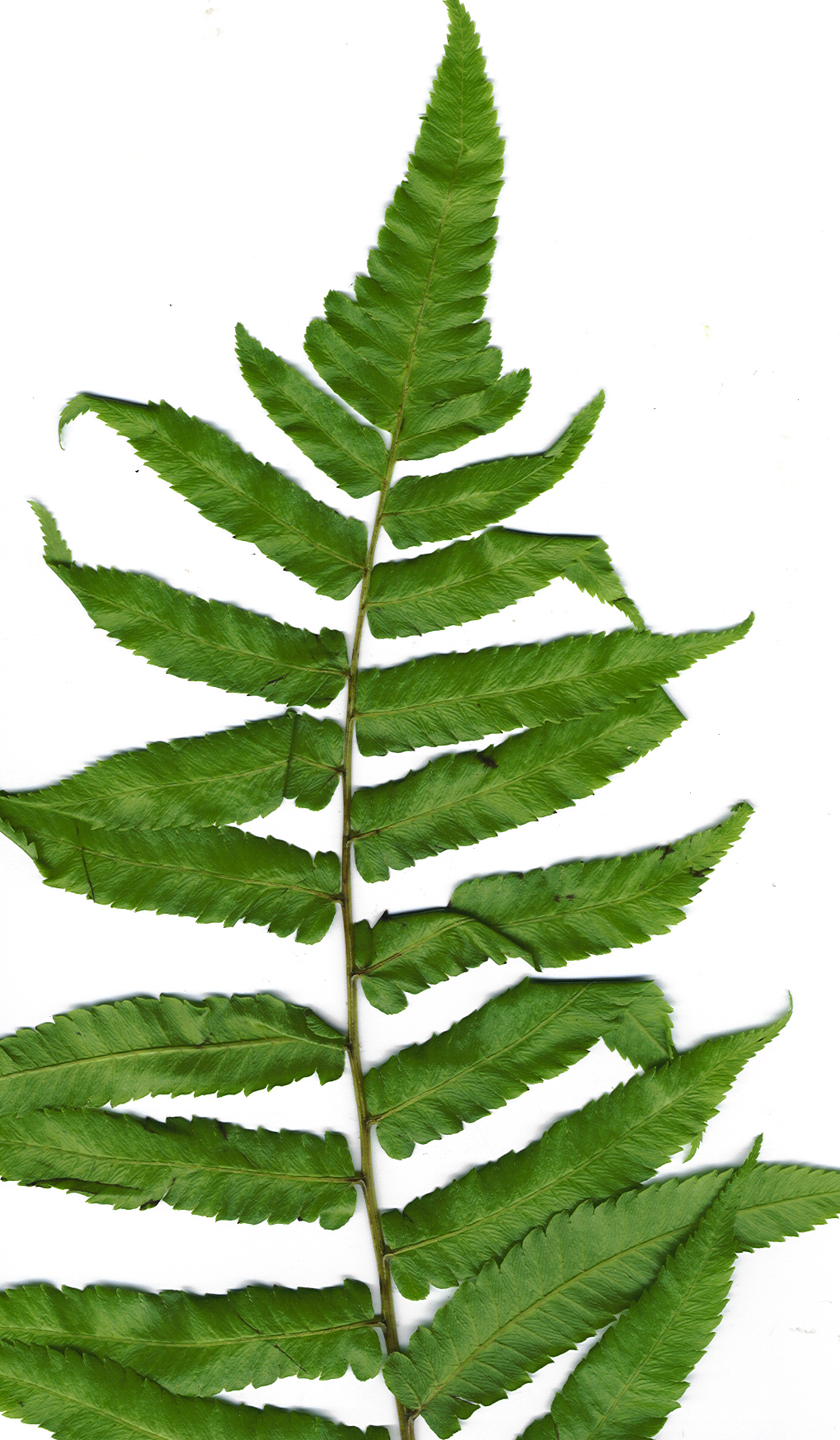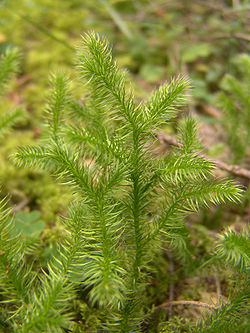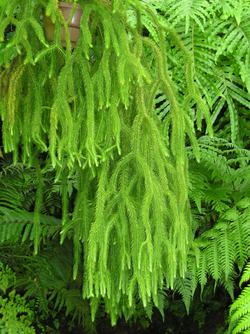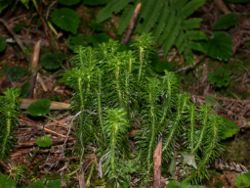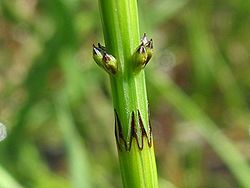Difference between revisions of "AY Honors/Ferns/Answer Key"
(Marked this version for translation) |
|||
| Line 11: | Line 11: | ||
|insignia=Ferns_Honor.png | |insignia=Ferns_Honor.png | ||
}} | }} | ||
| − | {{Honor_Master|honor= | + | {{Honor_Master|honor=Dogs|master=Naturalist|group=Flora}} |
{{IAConnection|[[Investiture_Achievement/Explorer/Nature_Study|WILDERNESS EXPLORER Nature Study]]|(as one of two options) completing Requirement 6 of this Honor|Therefore this Honor is a popular choice for the Skill Level 2 or 3 Nature Honor required for WILDERNESS EXPLORER.}} | {{IAConnection|[[Investiture_Achievement/Explorer/Nature_Study|WILDERNESS EXPLORER Nature Study]]|(as one of two options) completing Requirement 6 of this Honor|Therefore this Honor is a popular choice for the Skill Level 2 or 3 Nature Honor required for WILDERNESS EXPLORER.}} | ||
Revision as of 03:02, 10 March 2015
Template:Honor desc Template:Honor Master
|
Investiture Achievement Connection: This Honor is related to the Investiture Achievement requirements for WILDERNESS EXPLORER Nature Study which require (as one of two options) completing Requirement 6 of this Honor. Therefore this Honor is a popular choice for the Skill Level 2 or 3 Nature Honor required for WILDERNESS EXPLORER. |
1. How are ferns different from flowering plants or trees?
Flowering plants (including trees) produce seeds, while ferns produce spores. A chief difference between spores and seeds is that spores have very little stored food resources compared with seeds, and thus require more favorable conditions in order to successfully germinate. Seeds, therefore, are more resistant to harsh conditions and require less energy. Spores are usually produced in large numbers to increase the chances of survival.
2. Where is the true stem of a fern? What part grows above the ground? What is the most favorable environment in which ferns grow?
The true stem of a fern grows underground. All of the above-ground parts of a fern are known collectively as the frond. The part of the frond that looks like a stem is called the rachis (pronounced RAY-kiss).
Ferns have a popular image of growing in moist, shady woodland nooks, but the reality is far more complex. Ferns grow in a wide variety of habitats, ranging from remote mountain elevations to dry desert rock faces to bodies of water to open fields. Ferns in general may be thought of as largely being specialists in marginal habitats, often succeeding in places where various environmental delimiters limit the success of flowering plants. On the other hand, some ferns are among the world's most serious weed species, such as the bracken growing in the British highlands, or the mosquito fern (Azolla) growing in tropical lakes. There are four particular types of habitats that are often key places to find ferns: the afore-mentioned moist, shady forest cove; the sheltered rock face, especially when sheltered from the full sun; acid bogs and swamps; and tropical trees, where many species are epiphytes (an organism that grows upon or attached to a living plant).
3. How do ferns reproduce? Locate and describe three kinds of sori (from three kinds of ferns).
Fern Reproduction
Fern reproduction involves some big words, but we will break them down for you as they are introduced. There are two generations in a fern's lifecycle, the diploid generation, and the haploid generation. The diploid generation has a full complement of genetic material, while the haploid generation has only half the genetic material.
The life cycle of a typical fern is as follows:
- A mature fern, called a sporophyte fern produces spores through a process called 'meiosis (pronounced my-OH-sis). Each spore has only half the genetic material of the parent plant, a condition called haploid.
- The spores are dispersed
- A spore grows by cell division into a gametophyte - still with only half the genetic material of an adult organism.
- The gametophyte produces both sperm and eggs on the same organism using a process called mitosis (pronounced my-TOE-sis).
- The egg remains attached to the prothallus, but the sperm leaves the prothallus and swims to an egg on another plant which it then fertilizes.
- The fertilized egg is now has a full set of genetic material (and is called diploid) and grows into a sporophyte (the typical adult "fern" plant).
Kinds of Sori
The sori on a given species of fern always takes on the same characteristics. They are usually arranged on the underside of a fertile frond, sometimes in straight lines, sometimes in curved lines, sometimes in circular clumps, and sometimes in kidney-shaped clumps. Because there are a variety of arrangements of the sori, and because the arrangement on each species is somewhat fixed, this characteristic is often used to identify the fern.
- Woodwardia
- This genus of ferns is commonly known as the "chain fern" because the sori are arranged in broken lines, somewhat resembling a chain.
- Pteridium
- This genus of ferns is commonly known as "bracken". The sori are arranged along the edge of the frond, and the edge is curled over slightly.
- Andiantum
- This genus has kidney-shaped sori along the edge of the fronds.
- Onoclea
- The sori of the onoclea genus are clustered like beads or grapes on the upright fertile fronds, hence the common name Bead fern.
4. How do spores travel from the parent plant to a new location? How long does it take a spore to develop into a mature plant? Observe from live ferns or pictures how a young fern is different from an adult fern.
Spores are stored by the fern in tiny cases called sporangia. These spore cases are massed together into a sorus (plural sori) which is visible to the naked eye on the underside of a fertile frond (not all fronds are fertile). The spore case is encircled by a ring consisting of a single layer of cells called an annulus. This ring goes almost all the way around the spore case. As the spore case dries out, it becomes brittle until it finally splits open. Since the ring is stronger than the rest of the spore case, it slowly pulls the case open. When water tension is released, the ring suddenly snaps, throwing spores out away from the fern at great speed. Because spores are so tiny (invisible to the naked eye), even the slightest breeze will carry them great distances.
If the spore lands in a location with favorable conditions, it will develop into a gametophyte in about two weeks. If the gametophyte is fertilized, it will grow into a young fern in about 3 and a half months. The amount of time required for these growth periods varies greatly depending on conditions and the species.
Below are examples of a young fern still in the fiddlehead stage, and a mature frond of the same species.
5. Know the medicinal uses of three ferns.
- Adiantum aleuticum (Western Maidenhair Fern)
- Frond tea is used to strengthen mucosal membranes, treat coughs, throat congestion, and respiratory irritation caused by air pollution.
- Asplenium scolopendrium (Hart's-tongue Fern)
- This fern had use in folk medicine as a spleen tonic.
- Cibotium menziesii (Hawaiian Tree Fern)
- The pith of the trunk is used in a combination of other Hawaiian plants to create a 'blood purifier', and is used in other combinations to help relieve weakness or chest pains. Heated fibres of the fronds are used to cure numerous bodily ailments such as muscle pain, stiff joints etc.
- Phlebodium aureum (Cabbage palm fern)
- Its uses include:
- for psoriasis and other skin conditions
- for Alzheimer's disease, dementia, and memory problems
- for coughs, bronchitis, chest colds, and other upper respiratory problems
- for autoimmune disorders
6. Draw or photograph ten kinds of ferns and properly identify them.
We present here ten ferns that you may wish to carefully draw. If you set out to photograph or draw ferns in the field, you will need a good field guide to properly identify them.
Ostrich fern (Matteuccia struthiopteris)
Where found: Temperate regions of the Northern Hemisphere in eastern and northern Europe, northern Asia and northern North America.
Description: The Ostrich fern or Shuttlecock fern (Matteuccia struthiopteris) is a crown-forming, colony-forming fern. It grows from a completely vertical crown, favoring riverbanks and sandbars, but sends out lateral stolons to form new crowns. It thus can form dense colonies resistant to destruction by floodwaters.
Oak Fern (Gymnocarpium dryopteris)
Where found: Common in the Canadian forests, it is also found in Scotland and Scandinavia as well as North Western United States.
Description: The Oak Fern is a fern of the family Polypodiaceae. It has small, delicate fronds with ternately-compound pinnae (leaves). Fronds occur singly. On the underside of matured pinnae naked sori can be found.
Common Male Fern (Dryopteris filix-mas)
Where found: The Male Fern is one of the most common ferns of the temperate Northern Hemisphere, occurring throughout much of Europe, Asia and North America. It favours damp shaded areas and is particularly ubiquitous in the understory of woodlands, but also found in shady places on hedge-banks, rocks and screes. It is much less abundant in North America than in Europe.
Description: The half-evergreen leaves have an upright habit and reach a maximum length of 1.5 m, with a single crown on each rootstock. The bipinnate leaves consist of 20-35 pinnae on each side of the rachis. The leaves taper at both ends, with the basal pinnae about half the length of the middle pinnae. The pinules are rather blunt and equally lobed all around. The stalks are covered with orange-brown scales.
Cinnamon Fern (Osmunda cinnamomea)
Where found: It is native to the Americas and eastern Asia, growing in moist woodlands. In North America it occurs from southern Labrador west to Ontario, and south through the eastern United States to eastern Mexico and the West Indies; in South America it occurs west to Peru and south to Paraguay. In Asia it occurs from southeastern Siberia south through Japan, Korea, China and Taiwan to Myanmar, Thailand and Vietnam.
Description: It is a deciduous herbaceous plant which produces separate fertile and sterile fronds. The sterile fronds are spreading, 30-150 cm tall and 15-20 cm broad, pinnate, with pinnae 5-10 cm long and 2-2.5 cm broad, deeply lobed (so the fronds are nearly, but not quite, bipinnate). The fertile spore-bearing fronds are erect and shorter, 20-45 cm tall; they become cinnamon-colored, which gives the species its name. The fertile leaves appear first; their green color slowly becomes brown as the season progresses and the spores are dropped. The spore-bearing stems persist after the sterile fronds are killed by frost, until the next season. The spores must develop within a few weeks or fail.
Interrupted Fern (Osmunda claytoniana)
Where found: Osmunda claytoniana is native to eastern North America and eastern Asia. In eastern North America it occurs from southern Manitoba, Ontario, Quebec (up to the tree line), east to Newfoundland and south through the Appalachian mountains down to Georgia and west to the Mississippi River. In Asia, it is found in the Himalaya, southern China, Japan, Korea, and Taiwan.
Description: The fronds are bipinnate, 40-100 cm tall and 20-30 cm broad, the blade formed of alternate segments forming an arching blade tightening to a pointed end. The lower end is also slightly thinner than the rest of the frond because the first segments are shorter. Three to seven short, cinnamon-colored fertile segments are inserted in the middle of the length, giving the plant its name. In their absence, the plant in all its stages is extremely similar to Osmunda cinnamomea (Cinnamon Fern). To distinguish them, look at the base of the segments; where O. cinnamomea has typical felt-like hairs, the few hairs present on O. claytoniana are extremely short, usually requiring a magnifying glass to see well.
Brackens (Pteridium spp.)
Where found: The genus has probably the widest distribution of any fern genus in the world, being found on all continents except Antarctica and in all environments except for hot and cold deserts.
Description: Brackens are a genus of about ten species of large, coarse ferns. The plant sends up large, triangular fronds from a wide-creeping underground rootstock, and may form dense thickets. This rootstock may travel a metre or more underground between fronds. The fronds may grow up to 2.5 m (8 feet) long or longer with support, but typically are in the range of 0.6-2 m (2-6 feet) high. In cold environments bracken is winter-deciduous, and, as it requires well-drained soil, is generally found growing on the sides of hills.
Vegetable fern (Diplazium esculentum)
Where found: It is found throughout Asia and Oceania.
Description: Vegetable fern is an edible fern. It is probably the most commonly consumed fern, and is quite tasty, giving it the name "vegetable". It is used in many oceanian recipes, and made into salads and stir fry.
Tasmanian Tree Fern (Dicksonia antarctica)
Where found: The Tasmanian Tree Fern is an evergreen tree fern native to parts of Australia, namely New South Wales, Tasmania, and Victoria. It is particularly suited to garden planting and landscaping purposes and is one of the most popular tree ferns in the world.
Description: These ferns can grow to 15 m in height, but more typically grow to about 4.5-5 m, and consist of an erect rhizome forming a trunk. They are very hairy at the base of the stipe (trunk). The large, dark green, roughly-textured fronds spread in a canopy of 2-6 m in diameter. The shapes of the stems vary as some grow curved and there are multi-headed ones. The fronds are borne in flushes, with fertile and sterile fronds often in alternating layers.
Christmas Fern (Polystichum acrostichoides)
Where found: The Christmas fern is native to eastern North America from Nova Scotia west to Minnesota and south to Florida and eastern Texas.
Description: The Christmas fern is an evergreen fern, with fronds growing to 30-80 cm long and 5-12 cm broad, pinnate with 20-35 pairs of pinnules. The spores are produced on small pinnules toward the apex of the frond. This fern was once commonly used as a Christmas decoration.
Sensitive fern (Onoclea sensibilis)
Where found: This fern dwells in a variety of wet swamp and wood habitats: wet meadows, thickets and bogs, as well as stream and riverbanks and roadside ditches. It ranges from Newfoundland to Florida and west to Texas, North Dakota and Manitoba, but is also native to east Asia and has become naturalized in western Europe.
Description: The Sensitive fern (Onoclea sensibilis), also known as the Bead fern, is a coarse-textured, medium to large-sized perennial fern. The name comes from the observation by early settlers that it was very sensitive to frost, the fronds dying quickly when first touched by it. The sterile and fertile fronds of this fern are quite different. The bright, yellow-green sterile fronds are deeply pinnatifid and are typically borne at intervals along a creeping rhizome. They grow to about 90 cm long, with a long, smooth stipe. The fertile fronds are much smaller, non-green, and have very narrow pinnae. The sori are clustered like beads or grapes on the upright fertile fronds, hence the common name Bead fern. The fiddleheads are a pale red color.
7. In addition to the common ferns there are fernlike plants known as club mosses and horsetails. Be able to recognize two club mosses and one horsetail. How are they similar to ferns?
Club mosses
Club moss is a term that describes the botanical family Lycopodiaceae (a family is one level up the hierarchy from the genus). Club mosses bear spores on specialized structures at the apex of a shoot; they resemble a tiny battle club, from which the common name derives. They are non-flowering and do not produce seeds.
- Lycopodium clavatum (Ground pine)
- This plant resembles a tiny pine tree. It grows in forests and sends runners underground form whence other plants spring.
- Lycopodium serratum (Toothed clubmoss)
- This plant is similar in appearance to L. clavatum. It prefers sandy to loamy soils in dappled or deep shade. The water-repellant spores can be used as a lubricant to keep things from sticking together.
- Lycopodium squarrosum (Tassle fern)
- These plants are also not true ferns. They are also similar to L. clavatum, but they have "branches" which hang from above somewhat like a weeping willow.
Horsetails
Horsetails, like club mosses and ferns bear spores rather than seeds. Horetails are in the order Equisetales which consists of a single family called Equisetaceae. There are 15 species in this order.
- Equisetum arvense (Field Horsetail)
- Equisetum arvense is a rather bushy perennial with a rhizomatous stem formation native to the northern hemisphere. These horsetails may have sterile or fertile stems. Sterile stems start to grow after the fertile stems have wilted. The sterile stems tend to be much taller and bushier, with the jointed segments being around one inch long with a diameter of about 1/20th of an inch. These segments contain one set of whorled, slender, erect branches each. Some stems can have as many as 20 segments and be as tall as 2-24 inches. The fertile stems tend to be half as tall as the sterile stems and also tend to be more succulent.
- Equisetum palustre (Marsh Horsetail)
- E. palustre is a perennial horsetail, growing between 10 to 50 centimeters (4" to 20"), in rare cases up to 1 meter (3'). Its fertile shoots, which carry ears, are evergreen and shaped like the sterile shoots. The rough, furrowed stem is 1 to 3 mm in diameter with usually 8 to 10 ribs, in rare cases 4 to 12. It contains whorled branches. The tight-fitting sheaths end in 4 to 12 teeth. The lower sheaths are dark brown and much shorter than the sheaths of the main shoot. The central and vallecular are about the same size, but the carinal channels are much smaller. The central channels measure about one sixth of the diameter of the stem.
